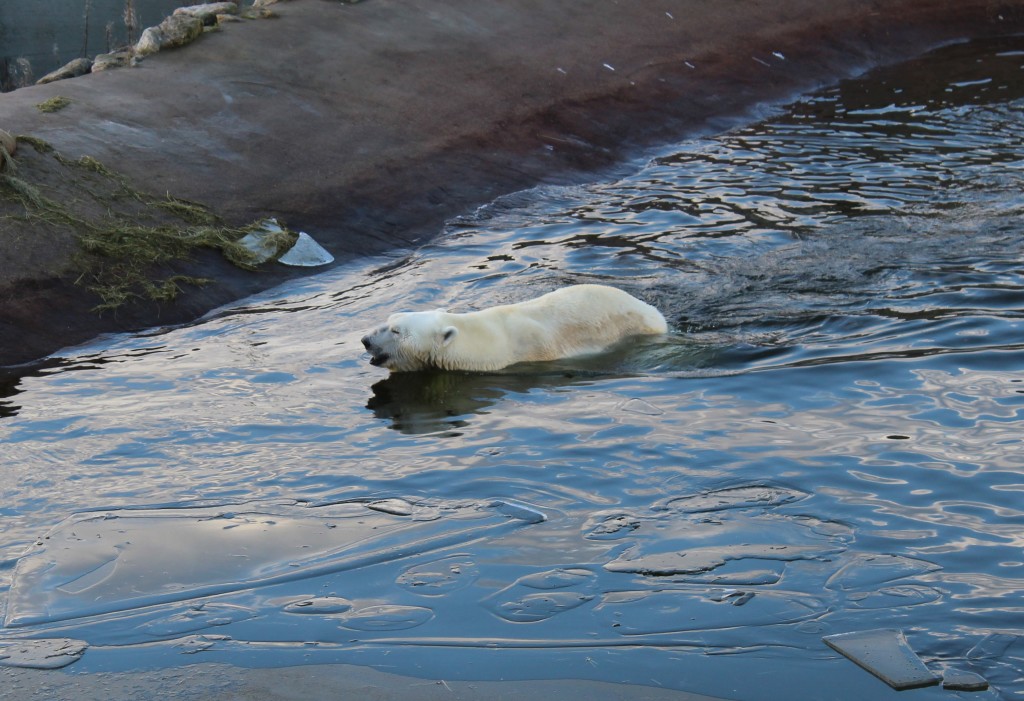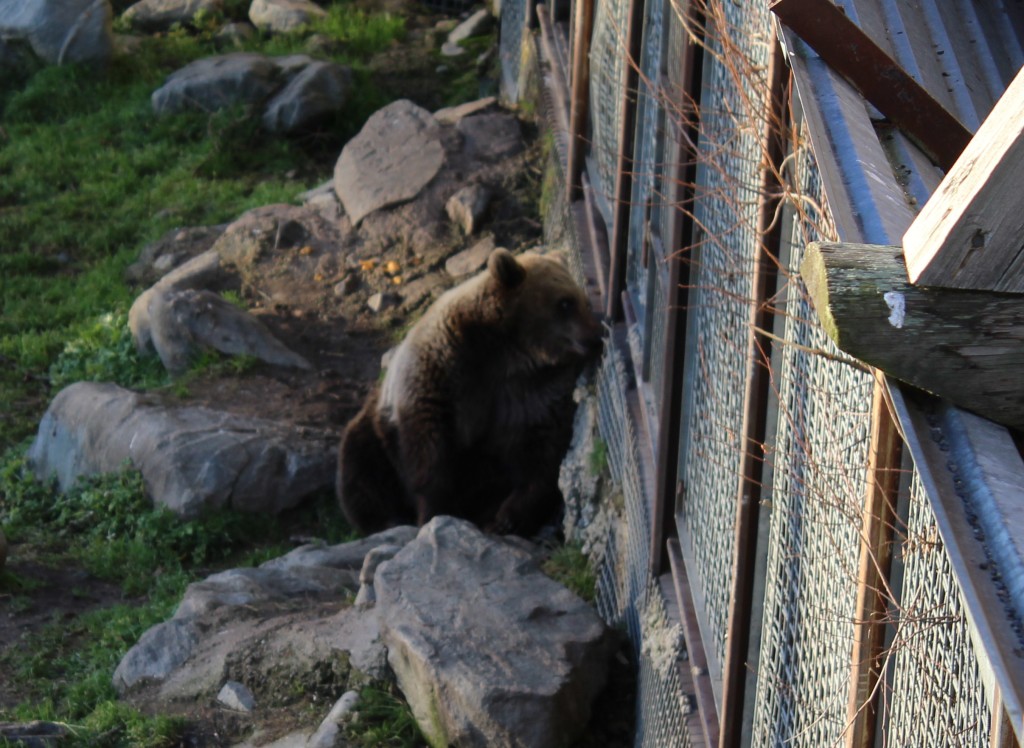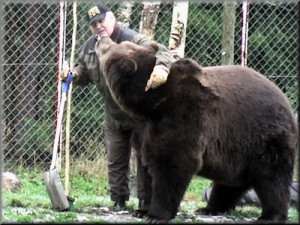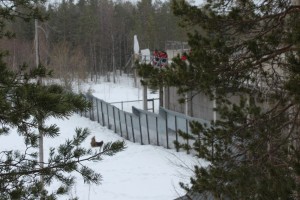At the cashier I was told the brown bears were still awake; they had not started the hibernation yet. That was nice to find out, because I was prepared I was too late to see my favourites, the brown bears, this time.
The Otters were taking a nap as I passed by, and after that I saw there were small cubs in the Wild Boars fence. They were digging in the dirt and did not pay any attention to me.
In the Polar bear fence the male polar bear Manasse was swimming alone around in his pool enjoying the sunny weather. But the amount of visitors certainly did not disturb him nor inspire him to do any tricks with his toys. We were only a handful of visitors this Tuesday afternoon. His female friend, Venus, was moved to a fence of her own and she uses to spend more and more time inside the den. The staff of the zoo is certainly hoping for good news near Christmas about the birth of small polar bear cubs. The behaviour of Venus is pointing in that direction. I caught a quick glimpse of Venus as she was outside the den catching some fresh air.
In the Brown bear fence it was just silent; the only inhabitant in the first fence, Malla the female bear, was probably inside the den to make preparations for the hibernation. Some orange left-overs outside the door showed she has been out eating them this morning still.
As I approached the fence for Jemma, the younger female bear, the humming voice told me she was there. She still licks her paws and the stone she is lying on and at the same time she makes the humming voice; like a content cat, just as she did last spring at my visit. I suddenly just felt sad about her. She was there all alone and had nothing else to do but to lick her paws. No visitors, no staff members, no friends. If you sometimes think you are bored and alone, you know how Jemma was feeling this day. The staff of Ranua Wildlife park had been manufacturing some tools to play with for the bears so that they would not feel so bored, but today none of the bears was playing with them. I like the idea, though.
I miss the old male brown bear, Palle-Jooseppi, who has been put to sleep last summer because of his suffering from pains in his bones and his age, 28 years. He wa once found in the forest as a cub alone and abandoned by his mother and has been living in Ranua zoo since then. But this summer it was time for him to move to the brown bears’ heaven. R.I.P. Palle-Jooseppi!
After the brown bear fences there is a new bridge leading to a new area.
In the new area live the newcomers, the dholes or the mountain wolves. There are six of them. The oldest of them are Lymy, 8 years and Viuhu 5 years. The four younger dholes are only 2 years old: Jekku, Velmu, Raiku and Kuje. They were spread all over the fence at my visit. The dholes which were overseeing the gray wolves in the fence next to them, were making some nice voices. They seemed a little nervous about the near precence of the gray wolves, but they will probably get used to them eventually.
The dhole (Cuon alpinus) is a canid native to Central, South and Southeast Asia. Other English names for the species include Asiatic wild dog, Indian wild dog, whistling dog, red wolf and mountain wolf. It is genetically close to species within the genus Canis; like wolves and dogs.
The dhole is a highly social animal, living in large clans without rigid dominance hierarchies and containing multiple breeding females. I wish the dholes welcome to Ranua and I hope they will find it nice and comfy in the zoo, even if the circumstances of course are nothing like being out in the wild. The dholes are endangered animals in the areas where they live.
After the bored brown bears and the nervous dholes, it was nice to find the wolverine couple playing together and enjoying each others presence. There will certainly be some wolverine-babies next spring.
Another new comer in the park is the female muskox. The lonely days for the male muskox are over and they also seemed to enjoy each other’s company as they stood there eating hay together. There are no quick movements among the muskoxen; slowly, slowly everything happens.
In the end of my visit in the Ranua wildlife park I stopped by to check on the Otters again. They were awake now and were really fuzzing around in the pool and the areas around that. They really seemed to enjoy each other’s company; the two male otters Harri and Olli. I wish they could get a female otter’s company soon.
My conclusion of my visit is: there is really a need for a male brown bear and a female otter in Ranua Wildlife park now. The two female bears are so bored and would certainly be cheered up by a newcomer.
In the Predator Center in Kuusamo, one can also get acquainted with some of the large predators that are found in Finland. At the moment, there are several bears at the Center, the oldest of which was born in 1992. Vyoti is probably the best known of all the bears. Foxes and lynx also reside at the Center. The man, Sulo Karjalainen, is living closely together with the bears, and he tells the press there are hugs and kisses between him and the bears almost every day. I wonder if there would be any suitable male brown bear to bring to Ranua zoo, that could cheer up the lonely female bears. On the homepage of the Predator Center you can among other thing follow the bearcam live.
If you know of any other available single male brown bear, I would suggest you to contact the Ranua Wildlife park.

































